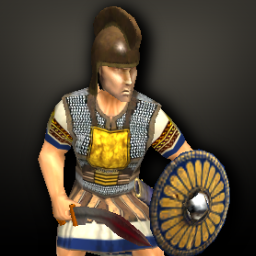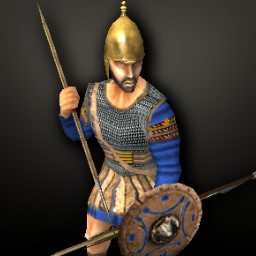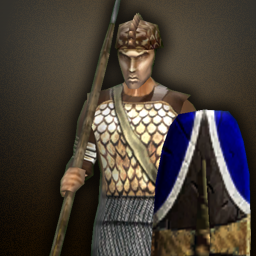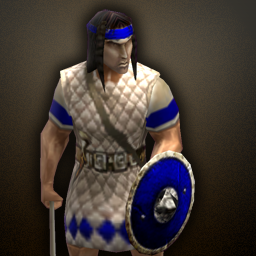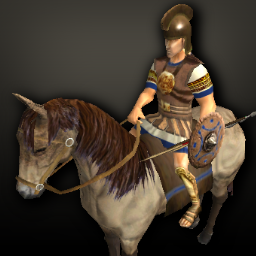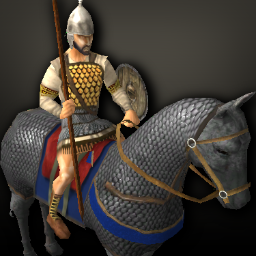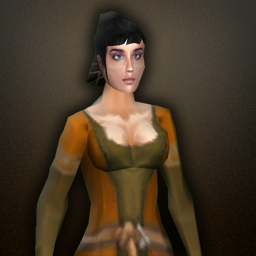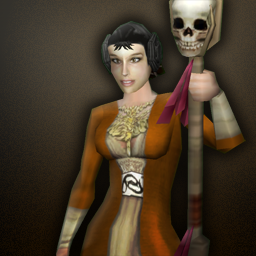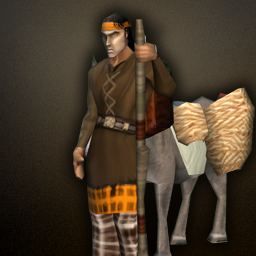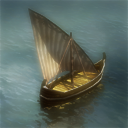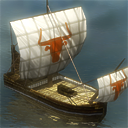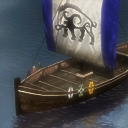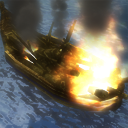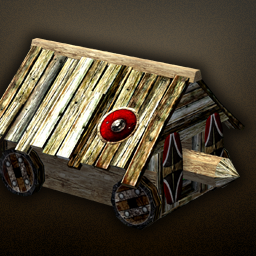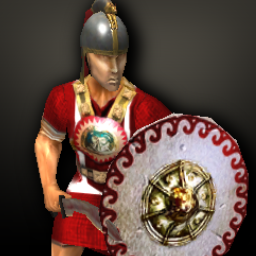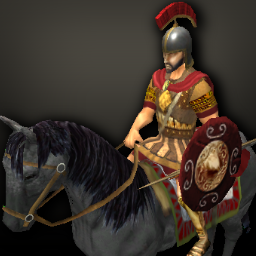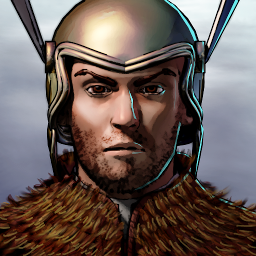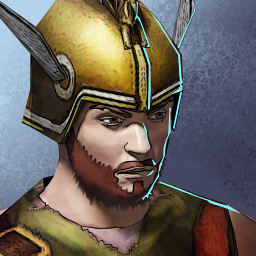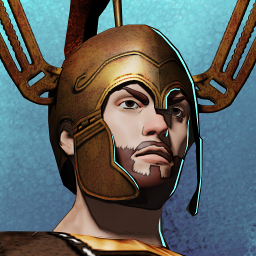OUTDATED
For the most up-to-date information, check the Civilisation Overview and Structure Tree in the game.
Table of Contents
IBERIAN CIVILISATION PROFILE
by Ken Wood [aka Phoenix-TheRealDeal / tonto_real] Email: ken@0ad.wildfiregames.com. (Arizona, United States of America). Historical consultant and contributor: Professor Alejandro Carneiro [aka Piteas] (Classical & Antiquity Greco-Romano-Iberico History Studies, Spain). Contributing concept artists: Antonio J. Flamas [aka ajflamas] (Spain) Aviv Sharon [aka Jeru] (Israel) Marco Giannini [aka Kellian] (Italy) Praveen Pillai [aka Tonto_CT] (United Kingdom) Brendan W. Keough. Revised by: Joshua Gilbert [aka Shogun 144] (United States) Carl Ortega [aka Carltonus] (United States)
UNIT DESCRIPTIONS
INFANTRY
- Generic Name: Iberian Swordsman
- Specific Name: Ezpatari
- Class: Citizen Infantry Swordsman.
- Armament: Falcata.
- Appearance:
- Garb: Basic tunic is of cream-coloured cloth with short-sleeved shirt. Hemmed sleeves and hem at the bottom of the skirt can be used for civ colour identification bands. Two metal rings above the elbows on each arm. The breast has a scaled armour plate 'vest' strapped over the shirt part of the tunic and chain mail skirt below. Gains a bronze breastplate when upgraded to Ultimate rank.
- Shield: Round buckler (caetra). Shield design should be largely geometric or animal design.
- Helmet: No headgear for basic unit, crested spine for advanced, plumed horsehair for Ultimate; see concept drawing below.
- Figure(s): -
- History: The Caetrati (sing. Caetratus) were the most numerous and well known of all Iberian soldiers. They were non-professional multi-purpose light infantry that operated far outside the normal bounds for such. Much of the fame of the Caetrati was derived from their skill, ferocity, and resilience in battle. The name of these men comes from the Latin term "caetra", the Roman name for the small buckler the they used in conjunction with their falcata, a sword strangely similar to the Greek kopis.
- Garrison: 1.
- Function: -
- Special: Iberian Steel.
- Generic Name: Lusitanian Skirmisher
- Specific Name: Lusitano Ezpatari
- Class: Citizen Infantry Javelineer.
- Armament: Javelin.
- Appearance:
- Garb: Basic tunic is of cream-coloured cloth with short-sleeved shirt. Hemmed sleeves and hem at the bottom of the skirt can be used for civ colour identification bands. Two metal rings above the elbows on each arm. The breast has a scaled armour plate 'vest' strapped over the shirt part of the tunic and chain mail skirt below. Gains a bronze breastplate when upgraded to Ultimate rank.
- Shield: Round buckler (caetra). Shield design should be largely geometric or animal design.
- Helmet: No headgear for basic unit, crested spine for advanced, plumed horsehair for Ultimate; see concept drawing below.
- Figure(s): -
- History: The Caetrati (sing. Caetratus) were the most numerous and well known of all Iberian soldiers. They were non-professional multi-purpose light infantry that operated far outside the normal bounds for such. Much of the fame of the Caetrati was derived from their skill, ferocity, and resilience in battle. The name of these men comes from the Latin term "caetra", the Roman name for the small buckler they carried. The Caetrati Lusitani were much the same way, but more skilled in skirmish and ambush tactics.
- Garrison: 1.
- Function: -
- Generic Name: Iberian Shieldbearer
- Specific Name: Ezkutari
- Class: Citizen Infantry Spearman.
- Armament: Spear having a broad point at the front end and smaller iron tip at the butt end.
- Appearance:
- Garb: Identical to Caetrati in general but with some heavier armor to represent their veteran status and higher standing.
- Shield: Large oval shield (scutum,ezkutu). See the Celts for shield design inspiration.
- Helmet: Same as Caetrati.
- Figure(s): -
- History: If the Caetrati operated as the Iberians' all-purpose light infantry, then the Scutarii (sing. Scutarius) operated as all-purpose medium infantry. The Scutarii were the older and more experienced Iberian warriors, forming the professional core of many Iberian armies. Like their lighter cousins, the Scutarii were famed for their versatility and the Iberian spirit. Their name is derived for the Latin term 'scutum', the Roman name for the large oval shields carried by the Scutarii which they used in much the same manner as Roman infantry.
- Garrison: 1.
- Function: -
- Special: -
- Generic Name: Iberian Slinger
- Specific Name: Habailari
- Class: Citizen Slinger.
- Armament: Three slings and sling bolt pouch; see concept drawing below.
- Appearance:
- Garb: Same basic tunic as Caetrati: Cream-coloured cloth with short-sleeved shirt. Hemmed sleeves and hem at the bottom of the skirt can be used for civ colour identification bands.
- Shield: None.
- Helmet: None at any experience level.
- Figure(s): Barefoot; nothing on body to restrict movement.
- History: The Iberian peninsula is literally littered with stone, ceramic, and leaden sling bolts at archeological sites, so evidence suggests that slingers were a common enough unit that they are tribal generic. While it is a popular notion that Balearic Slingers, possibly the best in the ancient world, were "Hispanic" because the islands now belong to modern day Spain, they are a Carthaginian unit relative to the times. Iberian slingers carry 3 slings like those of the Balearic. Slings were among the most widespread ranged weaponry on the Peninsula, second only to the Iberian javelin.
- Garrison: 1.
- Function: Relatively cheap. Quick rate of fire. Fastest infantry unit. Their agility makes up to some extent for their lack of armour.
- Special: -
CAVALRY
- Generic Name: Cantabrian Cavalry
- Specific Name: Kantabraiko Zaldun
- Class: Citizen Cavalry Javelineer
- Armament: Javelin.
- Appearance:
- Garb:
- Shield: Caetra.
- Helmet:
- Figure(s): -
- Mount:
- History:
- Garrison: 1.
- Function: -
- Special: -
- Generic Name: Iberian Lancer
- Specific Name: Lantzari
- Class: Citien Cavalry Spearman
- Armament: Iberian spear.
- Appearance:
- Garb: Basic garb is same as Caetrati, cream colored short sleeve tunic. Hemmed sleeves and hem on the bottom of the "skirt" for civ color band. On Advanced gains the distinct Iberian mail shirt with a disk plate hung over the breast by harness straps. On Elite gains Celtic iron ring-mail.
- Shield: Caetra.
- Helmet: Basic: ridge helmet, Advanced: Horse-hair plume helmet, Elite: Montefortino helmet with plume.
- Figure(s): -
- Mount: Typically a fine horse of mid stature as they were raised on the Iberian Peninsula; They decorated them with spirals of woven wool multi-coloured 'rosettes' affixed to top side and front of bridle and woven-fringed neck and breast bands as marks of their special pride in the animals.
- History: Mounted troops comprised variously 20~25% of warriors and their horses were well cared for by their owners. During the Punic and Iberian Wars the skill and quality of Iberian cavalry was held in high regard. Horses were raised in abundant numbers in the Iberian Peninsula from the earliest of times; it was said by the Romans that either Iberia or Numidia (in North Africa) could provide on the order of 100,000 mounts per year! During the Iberian Wars the Romans actively attempted co-opt as many as these horsemen as possible, a testament to their skill and Rome's recognition of it.
- Garrison: 1.
- Function: -
- Special: Iberian Steel.
SUPPORT UNITS
- Generic Name: Iberian Woman
- Specific Name: Emazteki
- Class: Female Citizen.
- Armament: None.
- Appearance:
- Garb: Various; see concept drawings below.
- Helmet: May or may not have headgear as depicted in concept drawings below.
- Figure(s):
- History: Iberian women were privileged members of society, equal in rank to men and superior in some areas. For instance a woman would inherit her father's wealth and then distribute it among male family members, in addition to finding wives for her brothers. Manual labor was a common activity, including farming and ditch digging, for which women received pay. Marriage and other commitments to individuals were fervently embraced by both genders. Iberian women were also capable of slaying their own children to prevent them from being captured.
- Garrison: 1.
- Function: -
- Special: -
- Generic Name: Priestess of Ataekina
- Specific Name: Emakumezko Apaiz de Ataekina
- Class: Healer.
- Armament: Skull staff.
- Appearance:
- Garb:
- Shield: None.
- Figure(s):
- History: To the best of our knowledge, only one temple-like structure has been found on the Iberian Peninsula dating from the times, and the Iberians worshiped their pantheon of gods at small home altars. However, a very special sculptured head and torso was found in a farmer's field around the turn of the 20th century of a personage who was obviously someone of great substance. As the two principal gods, of the many worshiped, were male Endovellikos and female Ataekina, we thought it would be nice to adopt The Lady of Elche as our priestess-healer representing Ataekina. We know from archelogy and the Romans that Ataekina was associated with spring, the changing of seasons, and nature in general. Ataekina also seems to have been associated with the cycle of birth-death-rebirth.
- Garrison: 1.
- Function: -
- Special: "Fede" Aura.
- Generic Name: Merchant
- Specific Name: Merkatari
- Class: Trader.
- Armament: None.
- Appearance:
- Garb: Colourful tunic, trousers in the checkered 'Celtic style', and boots.
- Helmet: Big "floppy" hat to keep the sun and rain off.
- Figure(s): Typical of Iberian male. Only one figure, riding on a seat at the yoke of the wagon.
- Mount: Trade wagon pulled by two oxen of the auroch cattle type. Put together the parts as shown below.
- History: It is not known exactly what 'vehicles' might have been used for trading, except that the Iberians did a lot of overland trading by land amongst themselves and some with people to the north of the Pyrenees, and that wagons and carts were known and used for something; it stands to reason they would have been used in commerce.
- Garrison: 1.
- Function: -
- Special: -
NAVY
- Generic Name: Fishing Boat
- Specific Name: Arrantza Ontzi
- Class: Fishing Ship.
- Appearance:
- Shell: -
- History: There is still much unknown about fishing among the Iberians. We do know that fishing was very important in Iberia, and many modern day fishing villages share the same site with ancient Iberian fishing villages.
- Garrison: Cannot.
- Garrison Capacity: 1; support, infantry
- Function: Gathering: Only method of collecting meat from fish.
- Special: -
- Generic Name: Trading Ship
- Specific Name: Merkataritza Itsasontzi
- Class: Merchantman.
- Armament: (Standard).
- Appearance:
- Shell: This is a knock-off for the ship that I want modeled for the Carthaginians to be skinned and statted somewhat differently. It will have solid sides rather than that lateral opening below the shield line. The vertical bands separating the shields are to be iron bands placed to strengthen the hull and should show bolts in the bands. See the pic immediately below for a basis.
- History: The Iberians, especially along the western and northwestern coasts of the peninsula, had been trading by sea with peoples in North Africa, Western Europe along the coast of Gaul and the British Isles by boat well back into the 2nd millennium BC. As such, their ships were very seaworthy, crossing stretches of the Atlantic Ocean (while they are not known to have traded by sea in the Mediterranean). Though the Carthaginians came along around the beginning of the 1st millennium and co-opted much of that trade, along with the Greeks in the Mediterranean, with 'better ships', they still would have influenced the seafaring peoples who built the 'high sided sailing vessels' along the Atlantic Seaboard. So it is not such a stretch to specify a good strong sailing ship for Iberians that can be used as either a merchant trading vessel or a quasi-war fighting transport of units.
- Garrison: Cannot.
- Function: High hitpoints (very strong and highly armoured hull; sea ram resistant).
- Special: -
- Generic Name: Celtic Pontos
- Specific Name: Ponti
- Class: "Trireme"
- Armament:
- Appearance:
- Shell:
- History:
- Garrison: Cannot.
- Function:
- Special: -
- Generic Name: Fire Ship
- Specific Name: ???
- Class:
- Armament:
- Appearance:
- Shell:
- History:
- Garrison: Cannot.
- Function:
- Special: -
SIEGE
- Generic Name: Battering Ram
- Specfic Name: Ahariburu
- Class: Ram.
- Armament: (Standard).
- Appearance:
- Shell: See notes below.
- History: It is not known if any of the Iberian tribes used rams; the unit is added to the civilization roster for gameplay purposes.
- Garrison: 1.
- Function: -
- Special: -
CHAMPION UNITS
- Generic Name: Champion Swordsman
- Specific Name: Leial Ezpatari
- Class: Champion Infantry Swordsman.
- Melee Armament: Falcata/Espasa.
- Ranged Armament: Saunion
- Appearance:
- Garb: - Same tunic as with all other Iberian war units, the so-called Iberian national costume according to Polybios. Armor similar to the Scutarius and the Iberian Lancer.
- Shield: A round 'Caetra' slightly larger in diameter than the Citizen Soldier units carry; has raised centre boss depicting the head of a wolf.
- Helmet: See concept drawing.
- Figure(s): See concept drawing.
- History: 'The Devotio (the devoted,loyal) were experienced veterans of 'foreign wars'. They served as mercenaries for other nations and having lived to return to their own where they assumed a position close to the chief or king. Their relationship was similar to that of feudal knights during the later Middle Ages. Their name derives from Latin rendering of the sacred oath these warriors took.
- Garrison: 1.
- Function: Strong against siege weapons, all Citizen Soldier units but additionally bonused against Infantry Spearman & Cavalry Spearman. Weak against Infantry Archer & Cavalry Archer.
- Special: -
- Generic Name: Champion Cavalry
- Specific Name: Leial Zalduneria
- Class: Champion Cavalry Javelineer.
- Melee Armament: Falcata/Long Sword (ornamental).
- Ranged Armament: Flaming Javelin
- Appearance:
- Garb: Iberian national costume. Armor should be identical to the Iberian Lancer.
- Shield: A round "Caetra" slightly larger in diameter than the Citizen Soldier units carry; has raised centre boss depicting the head of a bull.
- Helmet: See concept drawing.
- Figure(s): See concept drawing.
- Mount: Identical to Iberian Lancer.
- History:
- Garrison: 1.
- Function: Flaming javelin gives fire damage to units over time.
- Special: -
HEROES
- Generic Name: Viriato
- Specific Name: Viriatus
- Class: Hero1.
- Armament: Falcata.
- Appearance:
- Garb: Typical Iberian tunic. Fine mesh chain mail over clothing, belted. Animal pelt cape.
- Shield: A round 'Caetra' slightly larger in diameter than the Citizen Soldier units carry; has raised centre boss depicting the head of a lion.
- Helmet: Is sort of beehive shaped; has a horsehair plume that descends down from the back of the top of the beehive..
- Figure(s): See centre figure in two figures immediately below.
- History: Viriato, like Vercingetorix amongst the Gauls, was the most famous of the Iberian tribal war leaders, having conducted at least 7 campaigns against the Romans in the southern half of the peninsula during the 'Lusitani Wars' from 147 to 139 BCE. He surfaced as a survivor of the treacherous massacre of 9,000 men and the selling into slavery of 21,000 elderly, women, and children of the Lusitani. They had signed a treaty of peace with the Romans, conducted by Servius Sulpicius Galba, governor of Hispania Ulterior, as the 'final solution' to the Lusitani problem. He emerged from humble beginnings in 151 BCE to become war chief of the Lusitani. He was intelligent and a superior tactician, never really defeated in any encounter (though suffered losses in some requiring retreat). He succumbed instead to another treachery arranged by a later Roman commander, Q. Servilius Cepio, to have him assassinated by three comrades that were close to him.
- Garrison: 1.
- Function: Strong AT, high AR, high HP.
- Special: "Hero" Aura: "Tactica Guerilla".
- Generic Name: Karos
- Specific Name: Carus
- Class: Hero2.
- Armament: Falcata.
- Appearance:
- Garb: See pic below for basis, except that he will wear boots instead of sandals.
- Shield: Bronzed iron Caetra wound shield with animal head motif on the boss.
- Helmet: Smooth rounded bronze as shown.
- Figure(s):
- Mount: The typical Iberian horse with armour but also having in addition to the multi-coloured woolen floral looking rosettes on the bridle more decorative trappings across the breast and in the bridle of the horse, a bell hanging at the throat.
- History: Karos was a chief of the Belli tribe located just east of the Celtiberi (Numantines at the centre). Leading the confederated tribes of the meseta central (central upland plain) he concealed 20,000 foot and 5,000 mounted troops along a densely wooded track. Q. Fulvius Nobilior neglected proper reconnaissance and lead his army into the trap strung out in a long column. Some 10,000 of 15,000 Roman legionaries fell in the massive ambush that was sprung upon them. The date was 23 August of 153 BCE, the day when Rome celebrated the feast of Vulcan. By later Senatorial Decree it was ever thereafter known as dies ater, a 'sinister day', from whence our word disaster comes, and Rome never again fought a battle on the 23rd of August. Karos was wounded in an after battle small cavalry action the same evening and soon died thereafter, but he had carried off one of the most humiliating defeats that Rome ever suffered.
- Garrison: 1.
- Function: A strong high AT, high AR, high HP, cavalry unit having a special aura.
- Special: "Hero" Aura: "Tactica Guerilla".
- Generic Name: Indibil
- Specific Name: Indibilis
- Class: Hero3.
- Armament: Falcata, Spear.
- Appearance:
- Garb: The only picture of a statue rendition we have shows him hardly dressed (1st reference below), but we will show him much like the Edetano soldier in the second reference drawing below.
- Shield: -
- Helmet: -
- Figure(s): -
- Mount: -
- History: Indibil was king of the Ilegetes, a large federation ranged principally along the Ebro River in the northwest of the Iberian Peninsula. During the Barcid expansion, from 212 BCE he had initially been talked into allying himself with the Carthaginians who hade taken control of a lot of territory to the south and west, however after loss and his capture in a major battle he was convinced, some say tricked, to switch to the Roman side by Scipio Africanus. But that alliance didn't last long, as Roman promises were hollow and the Romans acted more like conquerors than allies. So, while the Romans and their allies had ended Carthaginian presence in 'Hispania' in 206 BCE, Indibil and another tribal prince by the name of Mandonio, who may have been his brother, rose up in repbellion against the Romans. They were defeated in battle, but rose up in an even larger rebellion that had unified all the Ilergetes again in 205 BCE. Outnumbered and outarmed, they were again defeated, with Indibil losing his life in the final battle and Mandonio being captured then later put to death. From that date onward, the Ilergetes remained a pacified tribe under Roman rule.
- Garrison: 1.
- Function: High AT, high AR, high HP.
- Special: "Hero" Aura: "Tactica Guerrilla".
NEW UNIT TRAITS
- "Fede" Aura: Effect: Replaces "Heal" Aura. Health regeneration rate is twice that of the normal Aura; simulates the Iberians' penchant for dying or committing suicide rather than surrender.
- Flaming Javelin: Effect: Once the player researches the 'Falarica del Fuego' Special Technology, the unit gains the ability to set fire to enemy units and structures as well as effect pierce damage when striking targets.
- Iberian Steel: Iberian steel in swords was the best in the world at the time, so this unit has a relatively higher attack factor than any other civ's swordsmen. Effect: +1 AT.
- "Tactica Guerrilla" ("Hero" Aura): The Iberians were singularly well known for their use of guerrilla war tactics and the concept of fighting in this fashion came from them; the word itself being derived from medieval Spanish. Time and time again they sucked their enemies into ambuscades. Effect: The Hero and any units grouped with him are invisible to enemies when idle or moving. They will only become visible when performing an action, such as attacking an opponent. Furthermore, invisible units (like units concealed in forests) aren't considered when determining if a player has been wiped off the map.
CIV CENTRE UNITS
- Melee Infantry: Caetratus.
- Ranged Infantry: Lusitanian Skirmisher.
- Cavalry: Cantabrian Cavalry.
FORBIDDEN CLASSES
- Infantry Archer. (while bow and arrows were used for hunting they were not used for warfare)
- Cavalry Swordsman. (could have, but removed to "cripple" the civ slightly as it is otherwise strong in units except for archers)
- Cavalry Archer. (see remark for Infantry Archer)
- Bireme. (no warship naval capability)
- Quinquereme. (no warship naval capability)
- Onager. (no sophisticated siege weaponry)
- Ballista. (no sophisticated siege weaponry)
STRUCTURE DESCRIPTIONS
VILLAGE
- Generic Name: Civic Centre
- Specific Name: Oppidum
- Class: Civic Centre.
- History: The Oppidum, plural Oppida, has a long history in the Iberian Peninsula. They were walled towns, dating back to even before the time period of the game and expanding greatly during it. They were usually built upon heights for better defensive purposes but sometimes right out on the plains, especially in the east where there may not have been heights at desirable locations near meandering rivers. This concept drawing is derived from an actual archeological site that has been excavated in the northeast of Spain having belonged to the Ilergete tribe as shown in the figure below and from the virtual reconstruction of the site at the museum located adjacent to it.
- Generic Name: House
- Specific Name: Etxe
- Class: House.
- Notes: It would be nice to have some housing for Iberians done in the Spanish style, if possible, then house 'types' just randomly selected during the progression of a game session. Note in the bottom-most example that the house on the right has a roof line fall that is incompatible with good architectural practice and would not have been so constructed by the practical homeowner even back then. Its orientation is such that any rainfall would run right over 'his' front door ... so one needs to be redone in such a manner that the roof incline directs water away from the front of the house. Also, in the concept drawing for the Oppida, it shows the Iberians houses being endowed with tiled roofs that is the convention that we've adopted as being typical to most of Iberia and for most of the structures of the civ. Also, that the adobe walls would have been plastered and 'whitewashed' for all but the most humble or neglected of abode, so it is the opinion of the author that if these models are to be used in the game that they need to be redone accordingly.
- History: Iberians structures of the time were typically built either entirely of stone or with stone stub walls with 'adobe' raising them on up to the roof lines above them. Roofs were then, depending on the economic status of individuals, covered with a composite of mud and binding vegetable and waterproofing asphaltic materials, or slate stone, or in many cases in the region, with so-called Spanish roofing tiles.
- Generic Name: Storehouse
- Specific Name: Ola
- Class: Storehouse.
- History: There was no such thing as an Iberian "mill" during the timeframe, although there may have been camps. However as a game construct we show one to serve purpose of supporting lumbering and mining operations.
- Generic Name: Farmstead
- Specific Name: Baserri
- Class: Farmstead.
- History: The Baserri is adopted as being a farm centre that would typically house more than a single family, or an extended family, involved in all manner of agricultural pursuit required of the times.
- Generic Name: Field
- Specific Name: Soro
- Class: Field.
- History: 'Soro' is a Basque term for a field for the growing of food. In historical terms, the Iberians tended to growing grains and vegetables, including a variety of roots, greens and artichokes (large blue thistle-like flower-heads), grape vines, and fruit trees ranging from the olive and fig to the apple. The Iberian Peninsula was an agricultural surplus area.
- Generic Name: Corral
- Specific Name: Saroe
- Class: Corral.
- History: Corrals have been utilised by people husbanding animals since 'time immemorial'; the Iberians mostly built stone-walled corrals so that is how they need to be depicted in the game. The Iberians kept cattle, sheep, goats, pigs, and horses in their corrals.
- Generic Name: Dock
- Specific Name: Kai
- Class: Dock.
- History: No one really knows how ancient 1st millennium Iberian Peninsular docks or ports looked, though they were probably pretty simple affairs having but a short pier, if even that. However, for the purposes of creating a structure in the game and because the Phoenicians and Carthaginians had such broad influence on the peninsula for a half millennium before the time frame of the game, we have chosen to model something similar to the inner port centre at Carthage, with typical Iberians architectural applications applied to it. The largest port that was strictly Iberian, though said to have been founded by the Greeks (defaulting to the resident Iberians when Greek merchants were blocked by Carthage from further trading into the western Mediterranean), was probably only that of Saguntum (and possibly Emporion) on the eastern coast of Spain referred to as the Spanish Levant.
- Generic Name: Barracks
- Specific Name: Kaserna
- Class: Barracks.
- History: To the best of our knowledge, the Iberians did not have standing armies in the sense that we know of them elsewhere or of today, it is doubtful that they had specific structures designated as military centres; however as a game construct we show a modest structure wherein military related activities take place. The early Iberians may have possessed something akin to a military centre in that the quarters of the warrior aristocracy was walled off from the rest of the city. But these distinctions eased over time and war eventually came to encompass all levels of Iberian society. In addition the Iberian approach to war varied across the Peninsula and so the kind of force gathered depended on location. This could vary from tribal and clan levies, a sort of feudal system, citizen armies similar to the Hellene city-states, to warrior aristocrats and mercenaries.
- Generic Name: Stable
- Specific Name: ???
- Class: Stable.
- History: -
- Generic Name: Outpost
- Specific Name: ???
- Class: Outpost.
- History: -
- Generic Name: Iberian Tower
- Specific Name: Dorre
- Class: Scout Tower.
- History: The Iberian Tower is rather unique for its time and the bases for its construction have been derived of extensive archeological and paleontological investigations by university faculty members in Spain at sites of which one of the principal is that located near the village of Aldea de Centenario at some distance south-southeast of Madrid. These towers were quite large, high and stonework monolithic as shown; being cylindrical lent them added strength. They were initially built at mountain passes to control access through them or on high places to provide overview and defense of surrounding terrain. They may have also been used as 'toll stations' along trading routes. Sometimes they were even built 'right out in the middle of nowhere' on the flat lands, but always with the idea of defensively controlling terrain. In time, many of these towers became a central feature in the Oppida or Castros that grew up around them because of their ideally situated locations, or they were made integral with the walls of growing town sites. Whether located in an isolated spot or integrated into a populated place, they were ideally suited to their purpose during the time frame of the game.
- Special: Mini-Fort Strongpoint.
- Generic Name: Archery Range
- Specific Name: ???
- Class: Atlas-only barracks.
- History: -
TOWN
- Generic Name: Temple
- Specific Name: Loki
- Class: Temple.
- Notes: Construction materials applied to the structure sketch are chosen to more accurately reflect the building practices prevalent at the time period of 0 A.D., including the tiling of the roofs. If the virtual representation of the Tartessian temple accurately reflects building practices on the Iberian Peninsula as far back as around 900 B.C. to which it is dated, then the Iberians in some places developed pretty sophisticated civilization and advanced architectural techniques that were contemporary to any other Mediterranean area civ of the time, though most of their cities may not have been as large.
- History: The Iberian tribes did not typically worship their gods at temples, but there has been a single instance in which the remains of an ancient Tartessian temple has been unearthed in Andalusia in southern Spain. The Iberians for the most part worshiped their gods at small household votive altars in their homes or sometimes at smallish monuments to them in the outdoors. Their two principal gods (though they are also known to have had many others) were Endovellikos, as the male represented by a boar, and Ataekina, the female counterpart as represented by a goat. We have chosen to depict these two gods by statuary in the typical vein of the times, mounted atop the pillars at the entrance to the temple, Ataekina on the right and Endovellikos on the left.
- Generic Name: Blacksmith
- Specific Name: Harotz
- Class: Forge.
- History: The Iberians were known to produce the finest iron and steel implements and weapons of the age.
- Generic Name: Marketplace
- Specific Name: Arruga
- Class: Market.
- History: The trade centres or marketplaces of the Iberians may have in fact been no more than folks gathering about in a plaza during certain days of the week or month in order to exchange goods. As a game construct we show a modest building where trading and purchasing goods for sale may take place.
- Generic Name: Iberian Tower
- Specific Name: Dorre
- Class: Defense Tower.
- (Attributes identical to Scout Tower; re-used again for this purpose.)
- Generic Name: Wide Wall
- Specific Name: Zabal Horma
- Class: Wall.
- History: High and strongly built defensive stone walls were a common structure of the Iberian Peninsula during the period, and for long thereafter.
- Generic Name: Double Gate
- Specific Name: Biko Sarbide
- Class: Gate.
- Special:
- Note: The concept comes from archeologist and paleontologist descriptions of the remains of such gates at various locations scattered about the Iberian Peninsula, though the interpretation from such documents is the author's, reinforced by the knowledge of 0 A.D. team's historian, Professor Alejandro Carneiro of La Coruna, Spain.
- History: One of the central attributes of the Iberians civ is that it was a highly defensive one that constantly gave the Carthaginians trouble in their bid to conquer the peninsula (which they never really did) and took the Romans another 200 years to subdue, along with incredibly large cumulative loss of Roman soldier's lives. Doubled gates of this kind have been found incorporated into walls surrounding Iberian villages, Oppidum, and fortresses, and Castros. It presents rather formidable aspects with its 4 towers, 2 gates, and a courtyard-like interior wherein enemy forces could become entrapped between the two gates, combined with a monolithically strong stone structure.
- Garrison:.
- Elevation Bonus.
CITY
- Generic Name: Castro
- Specific Name: Castro
- Class: Fortress.
- History: The Castro can be likened to a more strongly fortified town centre than that of the common Oppidum which were also fortified places of habitation. As such it was widely and normally constructed upon a height, and almost always had some sort of an acropolis built at the highest point within its towered walls. In the archeological record of the Iberian Peninsula, the remnants of as many as a thousand fortified places identifiable as Castros can be found in modern day Portugal alone.
- Special: Rocky Height.
- Generic Name: Siege Workshop
- Specific Name: ???
- Class: Arsenal.
- History: -
WONDER
- Generic Name: Cancho Roano.
- Class: Wonder.
- History: Cancho Roano is one of the few remaining sites for the ancient culture of Tartessos. It is thought to be a shrine to the goddess Astarte, and a reminder of the lost city of Atlantis.
- Phase: City.
SPECIAL STRUCTURES
- Generic Name: Revered Monument
- Specific Name: Gur Oroigarri
- Class: SB1.
- History: The Iberians were a religious people who built small monuments to their various gods. These monuments could also serve as family tombs.
- Requirements: Must be built within the player's territory.
- Phase: City.
- Special: Defensive Aura - Gives all Iberian units within LOS of the monument a 10-15% attack boost. Build Limit - Only 5 may be built per map and their effects to not overlap.
NEW STRUCTURE TRAITS
- Mini-Fort Strongpoint: Effects: Can garrison up to 10 units, either infantry or cavalry. Larger than other towers, both at base and in height. Has double the hitpoints of other towers. Elevation bonus.
- Rocky Height: Perched upon a rocky height, with a 20% increase in elevation. Effects: Larger footprint than normal Fortress. Additional +1 RA bonus.
FORBIDDEN STRUCTURES
(none)
CIV BONUSES
- CB1
- Name: Harritsu Leku
- History: With exception to alluvial plains and river valleys, stone is abundant in the Iberian Peninsula and was greatly used in construction of structures of all types.
- Effect: The Iberian player starts the match with a powerful prefabricated circuit of stone walls.
- CB2
- Name: Zaldi Saldoa
- History: Not unlike Numidia in North Africa, the Iberian Peninsula was known as 'horse country', capable of producing up to 100,000 new mounts each year.
- Effect: Horses can be captured in the wild and placed in the corral. Unlike normal corralled animals that generate food, the corralled horse functions similarly to a relic as in Age of Mythology: As long as it/they remain(s) in the corral, the resource cost of training horse-mounted units (cavalry) is reduced by a fixed amount of -5% per animal corralled.
TEAM BONUS
- TB1
- Name: Saripeko
- History: The Iberians were long known to provide mercenary soldiers to other nations to serve as auxiliaries to their armies in foreign wars. Carthage is the most well known example, and we have evidence of them serving in such a capacity in Aquitania.
- Effect: For allies, infantry and cavalry citizen-soldier skirmishers -50% cost (does not apply to champions also armed with the javelin).
TECHNOLOGIES
- Infantry: Above average, most standard except no archer peculiar; strong swordsmen and javelinists.
- Cavalry: Above average, most standard except no archer peculiar; strong swordsmen and javelinists.
- Naval: No warship specific techs as has no warships, Merchantman, seamanship & garrisoning upgrades only.
- Siege: Below average engines, mediocre for land ram & siege ram upgrade, no other engines; Citizen Soldier Javelinists have a sieging capability by S T Falarica del Fuego.
- Economy: (above average)
- Farming: Strong, all standard to include animal husbandry.
- Mining: Strong, all standard plus bonused for stone (CB) and ore (metal) (ST).
- Lumbering: Below average, nothing special.
- Hunting: Average.
- Land Trade: Average, most applicable domestic or international.
- Naval Trade: Average (except that Merchantman ship is ‘toughest’ in game).
- Architecture: (very strong)
- Defenses: Very strong, all, bonused by SBs.
SPECIAL TECHNOLOGIES
- ST1
- Name: Toledo Steel
- History: Secret steel working techniques give sword blades distinctive and beautiful markings. Not only that, but the steel's hardness is unparalleled.
- Effect: Soldiers +20% melee attack damage. Swordsmen get an additional +20% bonus.
Last modified
2 years ago
Last modified on May 30, 2022, 9:56:20 AM
Note:
See TracWiki
for help on using the wiki.

